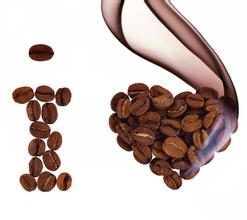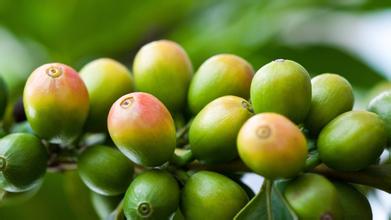Italian coffee grinder scale-introduction to the type and thickness of single coffee
Italian coffee grinder scale-introduction to the type and thickness of single coffee
To observe the coffee powder, the high-quality coffee powder should be powdered and gravel. If the coffee powder is soft, like flour, it means the powder is fine. On the contrary, if the coffee powder feels tough and rough, it means the powder is too coarse.
Adjustment course of bean grinder
Different bean grinders have different adjustment dials, so you should check the model of the coffee grinder and read the instructions carefully to determine the direction and strength of the dial. In general, if you keep in the habit of checking the settings of the bean grinder, you only need to make very small adjustments. As long as you move the turntable within 3 mm, you can change the thickness of the powder. Although 3mm is a very small number, the grinding time of the same coffee beans will change by 3-5 seconds to determine the direction you need to adjust (finer or thicker). Make sure there are enough coffee beans in the warehouse, and the valve between the warehouse and the sharpening knife is opened so that the coffee beans can fall smoothly into the grinding area.
Turn on the grinder for 10 seconds and discard the coffee powder (these are coffee powders that have not been adjusted).
Use the coffee powder to make a cup of coffee to ensure the accuracy of the steps of serving, flattening and pressing powder. The traditional method of making espresso (Ristretto) uses a water / flour ratio of 1:1 (i.e. 18 grams of coffee powder is used to make 18 grams of coffee) or 1:2 (i.e. 18 grams of coffee powder is used to make 36 grams of coffee), while a regular espresso uses a water / powder ratio of 1:2 (i.e., "Normale"). Test the quality of the coffee and the extraction time. Constantly adjust the dial to make the powder reach a perfect thickness.
The debugging of the electronic bean grinder mainly aims at two variables, the amount of powder and the degree of grinding. These two variables are mutual, and if you change one of them, the other will also change.
The ordinary electronic bean grinder adjusts the grinding and pulverizing time of the bean mill according to the pre-set amount of powder (please note that the amount of powder is adjusted by the mill based on time rather than weight). If you are not satisfied with the quality of your coffee, the first thing you need to do is to determine whether there is a problem with the amount of powder or the degree of grinding.
In general, the distance between the correct weight, flattened and powdered pressed powder and the outlet should be 5-6 mm. If the height of pressed powder is not in this range, you should try to adjust the powder output of the bean mill (that is, grinding and pulverizing time). When adjusting the amount of powder, the range of each adjustment should be between 0.2 and 0.3 seconds. After each adjustment, you need to re-test the quality of the coffee.

Important Notice :
前街咖啡 FrontStreet Coffee has moved to new addredd:
FrontStreet Coffee Address: 315,Donghua East Road,GuangZhou
Tel:020 38364473
- Prev

Drinking coffee is good for physical and mental health.
Drinking coffee is not just a pick-me-up. At the World Coffee Science Conference held in Kunming, experts and scholars from different countries have come to the same conclusion from different research angles: drinking coffee is good for health. Artalejo,F, an expert from Spain. The team's key study shows that coffee has a long-term beneficial effect on cardiovascular disease. In healthy people, if you drink 34 cups of coffee a day
- Next

KALITA three-hole hand-brewing Coffee Video course introduction to hand Mill Adjustment of Bean Mill
KALITA three-hole hand-brewing coffee video course bean grinder hand mill adjustment type and brand introduction: the type is divided from the material, the filter cup has ceramic, acrylic, AS resin and other types. According to the number of bottom filter holes, there are three kinds of holes: single hole, double hole and three holes. The brand single-hole filter cup was invented by Mrs. Melitta in Germany, so it is also known as Melitta.
Related
- Beginners will see the "Coffee pull flower" guide!
- What is the difference between ice blog purified milk and ordinary milk coffee?
- Why is the Philippines the largest producer of crops in Liberia?
- For coffee extraction, should the fine powder be retained?
- How does extracted espresso fill pressed powder? How much strength does it take to press the powder?
- How to make jasmine cold extract coffee? Is the jasmine + latte good?
- Will this little toy really make the coffee taste better? How does Lily Drip affect coffee extraction?
- Will the action of slapping the filter cup also affect coffee extraction?
- What's the difference between powder-to-water ratio and powder-to-liquid ratio?
- What is the Ethiopian local species? What does it have to do with Heirloom native species?

